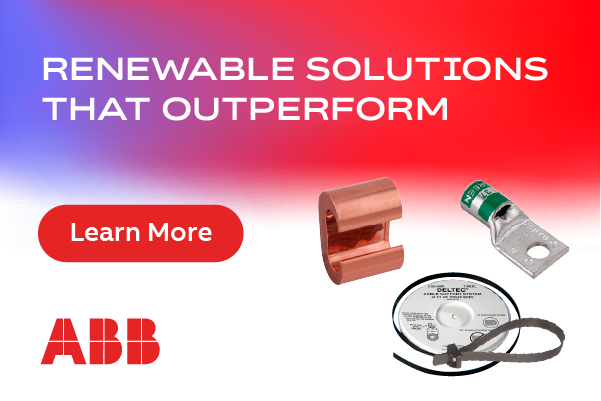The Importance of Certification and Testing in Photovoltaics
On a global scale, photovoltaic (PV) modules face a variety of harsh climates, from utility-scale installations in the southwest desert regions to commercial installations in seasonably colder northern climates, and everything in between. It’s difficult to design building products that not only meet and hold up against a variety of environmental challenges, but also equipment that won’t easily degrade over time. Still, PV modules and balance of system (BoS) components are expected to perform without failure or significant performance loss for their expected service life, which is generally 25 years (and, sometimes, this might even extend another 15 years beyond the warranty).
Despite some major early failures, taken as an industry whole, recent PV systems exhibit a very low percentage of module failures. This is good news and a tribute to advancements in research, technology, and engineering. However, this doesn’t mean that every system will perform as intended, and there are cases (though not widely reported), where significant numbers of modules required replacement within the first years of operation due to low performance or outright failure.
As a result, many engineering, procurement, and construction (EPC) firms and financiers have resorted to establishing their own requirements for ensuring solar project bankability at the module and system levels.
Qualification standards
Today, most module models are tested and certified to an international set of minimal “type qualification” performance and safety standards, such as from the International Electrotechnical Commission (IEC): IEC 61215 – Crystalline Silicon Terrestrial PV Modules, Design Qualification & Type Approval (last revised in 2005), and 61730 – PV Module Safety Qualification.
These certifications are often required for modules to be placed into service in many countries. Surprisingly, however, no such national requirement exists in the United States, despite a recommendation in 2010 to do so by the Solar America Board of Codes and Standards (Solar ABCs). Some state energy commissions, either through regulation or incentive program requirements, have taken it upon themselves and made certification to these standards compulsory.
Beyond current practices
The existing IEC standards have done what they were designed to do, and have served the industry well by weeding out the poorest quality modules. But, it’s largely recognized and agreed upon in the global solar arena that the current standards simply don’t go far enough. For example, certain field degradation and failure modes are not detected by the current tests. Moreover, cumulative damage wear-out mechanisms, which tend to limit service lifetime (particularly from specific climatic stresses), also aren’t adequately identified or addressed.
There are three separate avenues of work in progress to deal with these shortcomings. The first involves academic, scientific, and research-based activities, such as those done by NREL (US), Fraunhofer ISE (Germany), AIST (Japan), and others. These efforts will lead to greater scientific understanding in the long-term, but may only indirectly impact standards requirements.
The second avenue includes various commercial and related alternative approaches, of which there are a number of offerings. Some of these extend the current IEC tests, or combine them in different ways. Others don’t use IEC tests at all, but instead offer completely different approaches, such as climate-based weather stress tests. A description of some of these approaches is detailed in two Solar ABCs reports, “A Literature Review and Analysis on Accelerated Lifetime Testing of PV Modules” and “Validating PV Module Durability Tests” (visit www.solarabcs.org to learn more).
The third avenue involves a complex matrix of inter-related activities. These include elements of both of the above approaches, combined with formal standards development processes, where many of the participating organizations and/or individuals participate in multiple activities. Although this sometimes results in a harmonized approach, it can also lead to differing positions on the part of stakeholders.
Ongoing standards development
The IEC TC 82 WG2 (Technical Committee 82, Working Group 2) is an example of a standards development process where committee work progresses on the future third editions of the IEC 61215 and IEC 61730 qualification and safety standards, respectively. Note, there was also a working subgroup established to develop materials’ level tests for the polymeric components of modules. This includes backsheets/frontsheets, encapsulants, junction boxes, and tapes/adhesives.
The long-term environmental service degradation of these materials is known to contribute to module issues, so the committees are working to establish baseline-testing requirements to ensure new materials possess sufficient long-term performance and durability attributes. For instance, module backsheets receive up to 10% of the solar radiation of the front side, but there’s currently no UV testing requirement for them. Materials’ level tests acknowledge the difficulty of performing accelerated weather stress durability testing involving solar radiation on full size modules. But, by starting with pre-qualified materials, more durable modules should result.
A second major effort, the International PV Module Quality Assurance Task Force, has been underway since 2011 (learn more at www.nrel.gov/ce/ipvmqa_task_force). Sponsored by NREL, AIST, and PVTEC, the group enjoys fairly broad industry expert support with active working groups in the Americas, Asia, as well as Europe. Organized into a number of task groups, the primary goals of this force is to provide recommendations on testing standards to the IEC, with the intent of establishing a system whereby users could somehow compare modules and develop a module QA guideline.
Perhaps of more immediate interest in the US market, is the effort within the California Energy Commission (CEC) to upgrade their requirements. As IEC standards development is a lengthy consensus process (particularly, given the lack of a national requirement), the US Department of Energy has proposed a module protocol—Qualification Plus—with the support of NREL (www.nrel.gov/publications).
This protocol goes beyond the current IEC 61215, by extending or applying some tests that have been developed as a result of the concurrent IPVQATF and IEC TC82 WG2 activities. This protocol would be an optional and voluntary set of tests for the CEC’s Eligible Hardware List of modules. However, given the product differentiation needs of a competitive marketplace, one could clearly envision this (if approved by the CEC Commissioners) as becoming a de facto California requirement—and, by extension a US, national one. A decision by the CEC is expected later this year.
Regardless of the direction the CEC takes with California’s Qualification Plus, module manufacturers are looking to establish their brand quality, and purchasers are looking to differentiate between product offerings. As no single test program protocol is likely to serve all purposes, certifying to carefully selected programs from amongst the variety options available might be the best choice for the foreseeable future.
Careful due diligence requires some level of expertise to ensure that a chosen test program asks and answers the questions that are pertinent to a PV product’s long-term durability and reliability. That said, a level of pragmatism must also be observed—the most rigorous tests may prove unaffordable to the industry and, therefore, would be of no value. At the other extreme, an overly simplified test won’t adequately address critical issues.
In the final analysis, a useful test program must deliver value by being technically relevant and capable of reproducing failure modes experienced, or likely to be experienced, in the environment. It must also be timely and cost-conscious.
Atlas Material Testing Technology LLC
(A unit of AMETEK Measurement & Calibration Technologies)
http://atlas-mts.com
Author: Allen Zielnik & Kurt Scott
Volume: May/June 2014










.png?r=7789)

